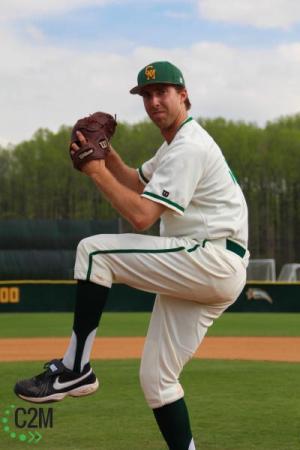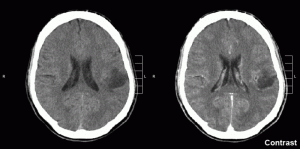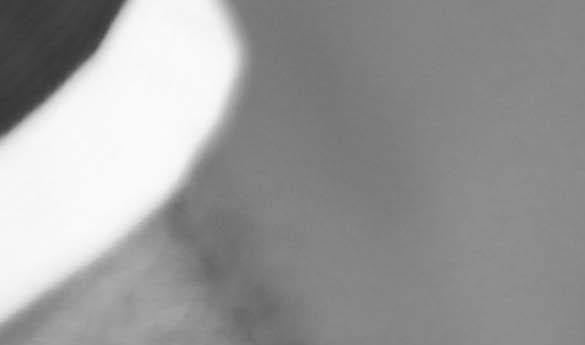Faith, academics drive Hendricks in long road to recovery
A few months ago he was sporting a Rollie Fingers-esque mustache, one that earned him the Movember Foundation’s “Man of Movember” title for Washington D.C.
Today, he’s clean shaven and wearing glasses along with a pea coat and scarf over a button-down checkered shirt. Brett Hendricks, a first-year graduate student at George Mason University, no longer resembles the famous Oakland Athletics closer of the mid-1970’s. Today he looks like the studious type—like himself.
“For me baseball always came second,” said Hendricks, a 24-year-old native of Wildwood, Missouri. “Academia is too important to me. I’ve tried to fight that stereotype my whole college career.”
 |
| Brett Hendricks is a former baseball catcher and graduate student at George Mason University (photo by John Irwin). |
But he is—or at least he was—the Mason baseball team’s catcher and has anything but a stereotypical baseball story.
Catchers might suffer the most wear and tear compared to any other position. The everyday effects of squatting and standing can take a toll on the knees. Players in this position can also take their fair share of bumps and bruises. Sometimes those bruises come from violent collisions at the plate, while other times they come from an errant foul ball.
Hendricks knows the effects of catching all too well.
“I don’t miss [catching] at all. It’s so brutal,” Hendricks said. “If you play every game like I did, you might have to catch nine innings five times a week.”
On April 30, 2010, Hendricks’ life was turned upside down when he suffered a concussion after being hit in the head with a bat in a game against Georgia State University.
“I want to say it was an inside fastball and he clonked me with his backswing,” Hendricks said. “I instantly felt a buzzing in my head.”
The full effect of the incident would not be realized until later.
“The next day I woke up and I realized I was concussed. I told my trainer I had a concussion and he did a SCAT [Sport Concussion Assessment Tool] test. I pretty much failed it miserably,” Hendricks said.
The SCAT2 is a standardized method of evaluating injured athletes for concussions in athletes aged 10 years and older.
“[The athlete] has to go 24-hours symptom free before we will redo a SCAT test,” said Andi Brutt, a graduate assistant athletic trainer for Mason’s baseball team. “Each day, the athlete will do a modified version of the test to see if their symptoms are changing. If not, that’s when we’ll consult with the docs.”
Unbeknownst to Hendricks, this was just the start of a long process before he could return to baseball.
“I did that for six weeks to two months without getting better,” Hendricks said. “The symptoms had lessened a little bit but I was still feeling it. So they sent me to a neurologist in May or June of 2010.”
Hendricks’ neurologist sent him to get an MRI which came back clean. But after suffering a second concussion while roughhousing with friends the night before the 2010 fall semester, Hendricks was sent to get a second MRI.
“I was still seeing the neurologist and he had me get another MRI and it showed a mass,” Hendricks said.
The mass was a grade II tumor.
 |
| Hendricks was diagnosed with a grade II mass tumor, known as oligoastrocytoma (photo courtesy of Mikhail Kalinin). |
According to the National Cancer Institute, grade II tumors are malignant tissue that look less like normal cells than cells in a grade I tumor. Cells from low-grade tumors (grades I and II) generally grow more slowly than cells from high-grade tumors (grades III and IV).
“That was like the semester from hell,” Hendricks said. “I was concussed. I had to keep up with school work. They say you’re not supposed to, but I didn’t want to fall behind.”
Hendricks returned to Missouri over Thanksgiving break and met with a neurosurgeon at Washington University in St. Louis. On Jan. 28, 2011 Hendricks underwent surgery to remove the mass.
Due to the type of tumor, a second surgery was required in Jan. 2012, again at WUSTL. He remained there, working as a parking attendant for Lafayette High School and practicing with the baseball team. It was then that he decided to become a pitcher.
“When I found out I had the tumor, I knew I couldn’t risk taking a foul ball off the mask and getting another concussion,” Hendricks said. “I had a good arm and I couldn’t hit. And my dad pitched, so he helped me a lot.”
Hendricks spent much of 2011 and 2012 working on his pitching. He stayed in contact with Mason’s pitching coach Stephen Hay and made the transition from catcher to pitcher.
“It’s an unbelievable journey he’s [Brett] had over the last few years,” said Bill Brown, Mason’s coach, prior to the start of the 2013 season. “Brett is going to get on the mound and pitch for us this year, that’s going to happen for him.”
On March 12, 2013, Hendricks got his chance. He made his first appearance for the Patriots since April 2010, pitching in a game against Richmond University.
After just six pitches the unthinkable happened. Hendricks was struck in the neck by a line drive.
“Incredibly the ball found him on the mound, hit him right in the neck,” Brown said. “I thought it killed him.”
Nearly 900 miles away, Hendricks’ parents were following the game live; his father, Ron, on his laptop at work and his mother, Nancy, at home.
“The ultimate worst thing in my life was when he got hit with the line drive,” Ron said. “After six or seven pitches I see this line drive hit him square in the face and I was just in a state of shock.”
Ron left work to be with his wife at home until they heard more news on their son’s condition.
“I equated how upset Nancy was to someone getting a phone call and the police saying ‘your kid was killed in a car accident’,” Ron said.
Though shaken, Hendricks had not been seriously injured and the liner marked the end of his baseball career.
“If it had been a couple inches higher, it would’ve been my head again,” Hendricks said. “I just couldn’t take that risk.”
The Hendricks family believes the line drive was a divine intervention of sorts.
“God closed the door for Brett,” Ron said.
Russell Hendricks, Brett’s younger 22-year-old brother, found comfort in his beliefs.
“Our faith in Jesus Christ is the glue that holds our family together,” Russell wrote in an email. “As a result of Brett's tumors and injuries with baseball, our faith in Christ has grown immensely. I think as a whole the Hendricks family has learned not to worry about the things that are out of our control.”
For Russell, the two-year battle his older brother fought greatly affected his faith.
“I personally drew closer and stronger in my faith in Christ knowing throughout this ordeal when everything was uncertain and unsteady, that Christ was my foundation and solid ground,” Russell said. “As a result, Brett and I are closer than ever and enjoy living life together whether we are 800 miles apart, or living under the same roof.”
Hendricks himself was affected in a similar way.
“The biggest thing is just to trust God in everything,” Hendricks said. “He has a plan for my life, I can’t figure it out. I don’t know why he’s brought me down this road.”
Hendricks earned a Bachelor’s degree in Spanish in 2011. He is currently pursuing his Master’s degree in Spanish education. Upon graduating from Mason he hopes to become a Spanish teacher.
“After this year I want to get hired somewhere provisionally,” Hendricks said. “I want to be a high school Spanish teacher and coach. That’s always kind of been my dream.”

